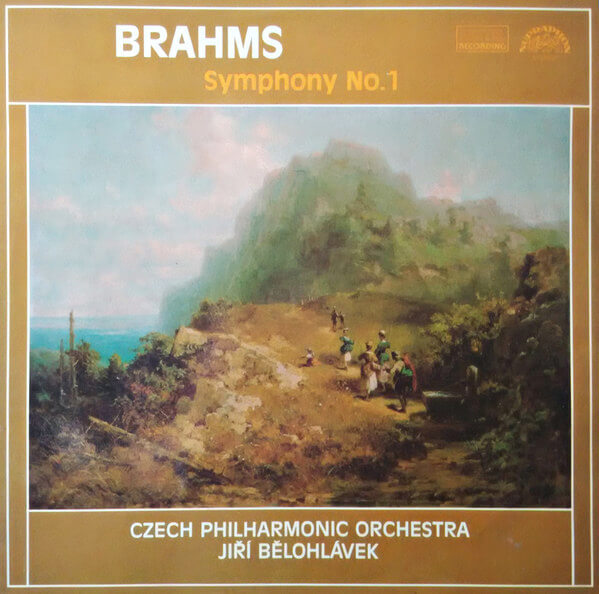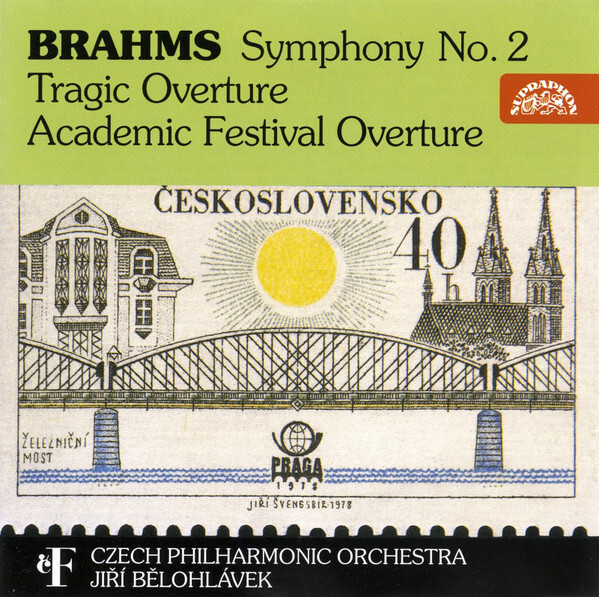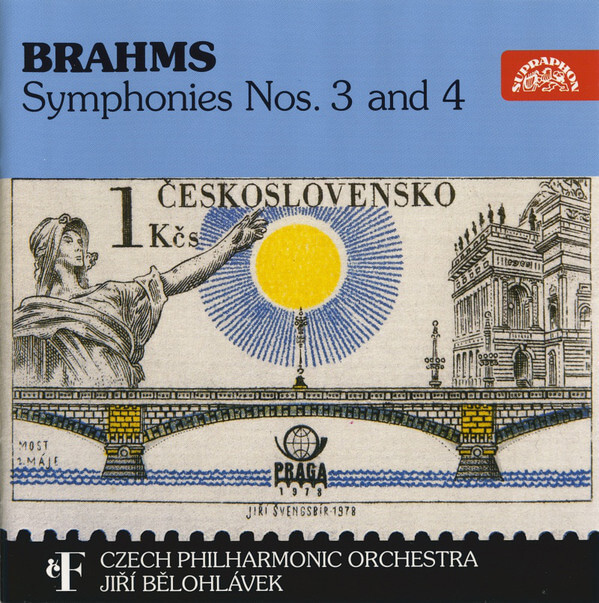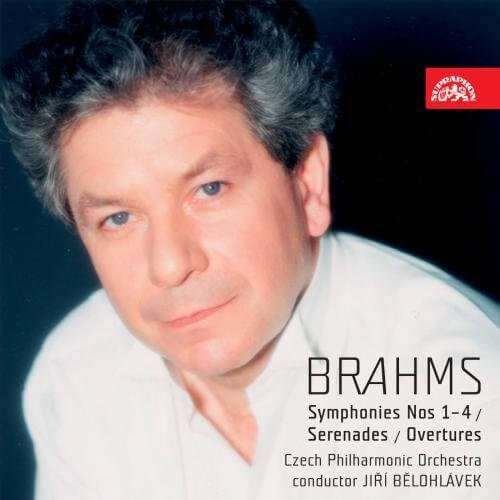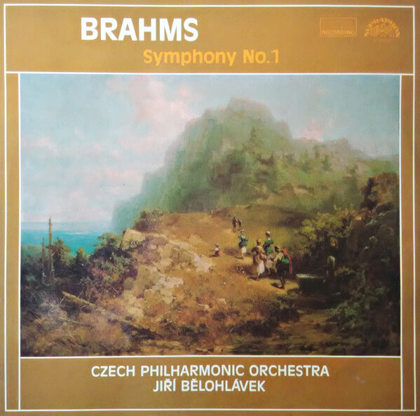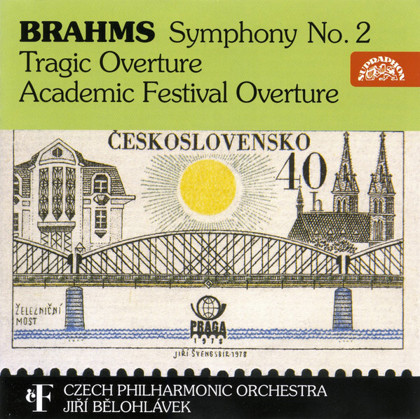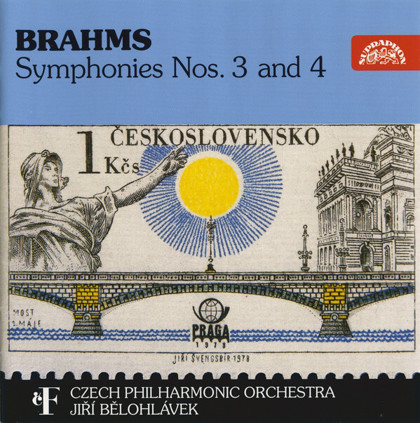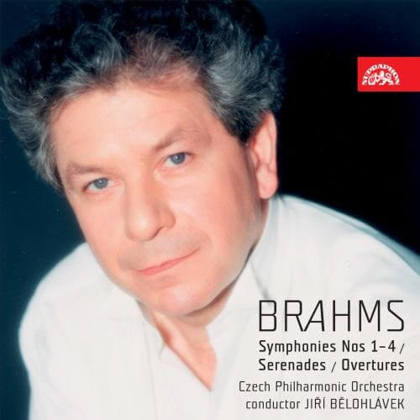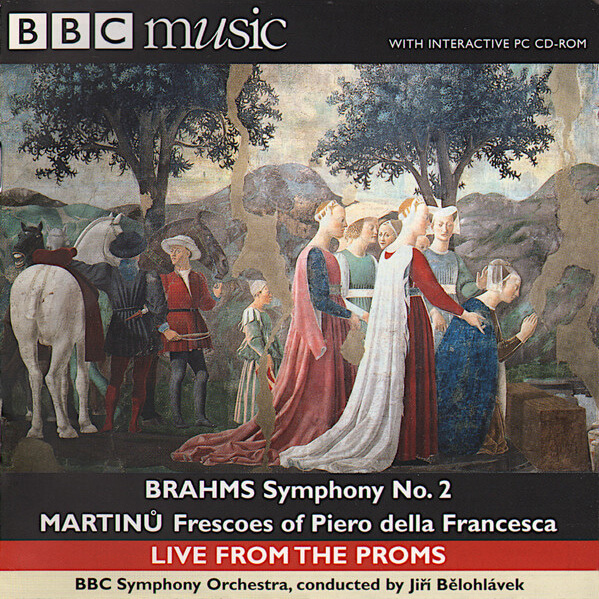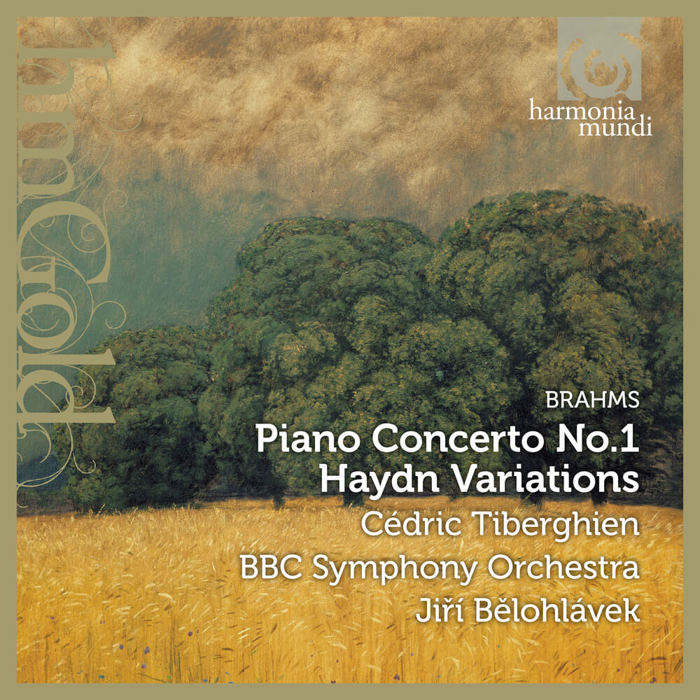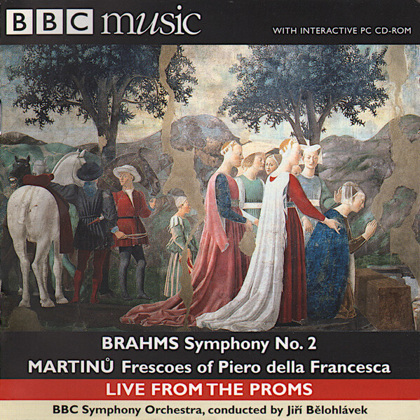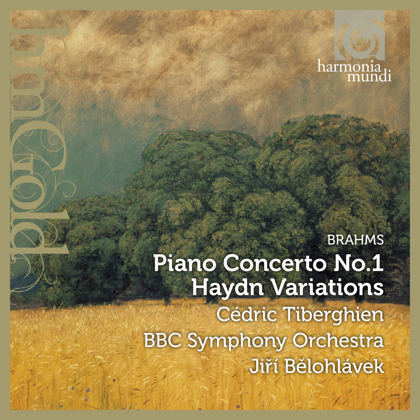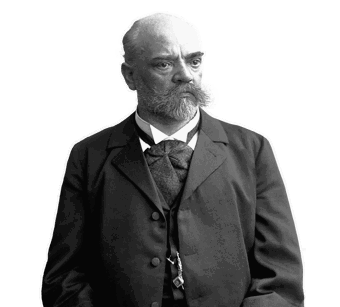Porsche Carrera GT: A more deeply tuned engine, power and endurance, dynamics, volume, refinement. German classic: Johannes Brahms.
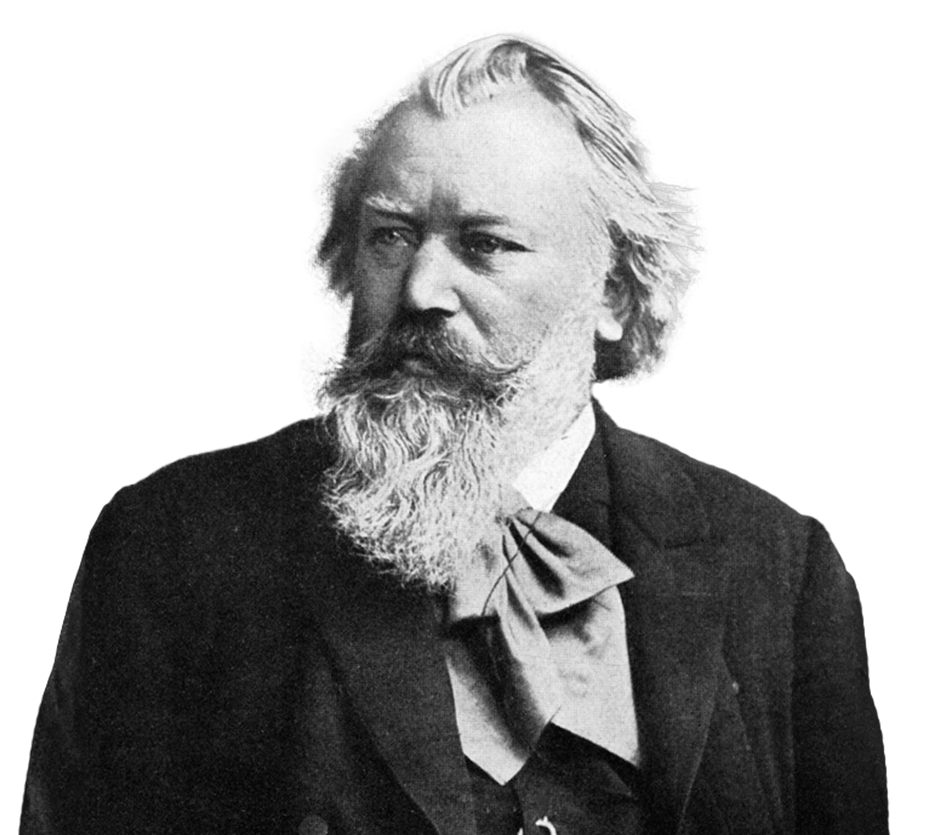
The total number of performances of compositions by
Johannes Brahms: 299
The three most performed works
| 48 times | First Piano Concerto in D minor |
| 37 times | Violin Concerto in D major |
| 36 times | Symphony No.4 in E minor |
The statistical data compiled, published and shared by Alexander Goldscheider © Citing from his book Jiří Bělohlávek: A Life in Pictures. [ 2 ]
Johannes Brahms was an important composer in Bělohlávek’s repertoire ever since his final concert at the Prague Conservatoire in 1966 when Bělohlávek conducted on the stage of the Dvořák Hall of the Rudolfinum for the first time. In addition to Dvořák and Mozart, Brahms’ Double Concerto for Violin, Cello and Orchestra was on the programme. Bělohlávek performed Brahms’ symphonies, concertos and other compositions throughout his career with many orchestras. And he made significant recordings of Brahms’ work with almost all the orchestras where he was the chief conductor.
He started performing Brahms with the Czech Philharmonic in the 1970p. In 1971, he conducted the Double Concerto at the opening concert of the Fifth International Tribune of Young Artists performed by excellent soloists Jan Talich and Evžen Rattay. The music of German romantic period was a major chapter in the repertoire of the Prague Symphony Orchestra, too. Bělohlávek focused on Brahms in the dramaturgy of individual seasons and audiences could listen to concerts consisting solely of Brahms’ works.
“The overall conception and the manner of musical articulation drew attention in Brahms’ First Symphony. (…) Bělohlávek, however young and of lively temperament, did not succumb to the allures of affected romantic imagination and maintained a safe balance in volume and tempo. That enabled him to construct the composition as a logical whole where one passage flows naturally from another and everything together confirms the composer’s intention. (…) Quite obviously, the orchestra “followed” the conductor and played eagerly. And why wouldn’t they! In Brahms, there is a lot to listen to and a lot to play! It is a rewarding task for a conductor who knows how to turn it into something real.” (p.121)
The concert exerted a mental strain on the audience, let alone on the orchestra and conductor. Bělohlávek himself was aware of what he was doing, when rehearsing such a demanding programme (Tragic Overture, Double Concerto for Violin, Cello and Orchestra in A minor and Concerto No.2 for Piano and Orchestra) and one can see this concert as a test of Bělohlávek’s abilities – especially the ability to interpret music closely linked to the composer’s personality, in a logical sequence and with sufficient internal contrasts, and also the ability to engage, fascinate and keep the attention of the orchestra.
Brahms’ Tragic Overture was included in the programme of Bělohlávek’s debut concert at the BBC Proms in 1993, when he conducted the BBC Philharmonic in Alexander von Zemlinsky’s Six Songs after Poems by Maeterlinck and Mahler’s Symphony No.1. This successful concert was the start of Bělohlávek’s intensive professional engagement in England, which later led to his post as the chief conductor of the BBC Symphony Orchestra.
During that time, Brahms was often featured on the programme of the orchestra and the orchestra members appreciated the possibility to play the best of German romantic repertoire, as well as contemporary music. Bělohlávek and the orchestra presented Brahms also to the Czech audience when they played his Concerto for Violin and Orchestra in D major with Ivan Ženatý at the Prague Spring 2012. He also performed Brahms in the composer’s native country – he conducted the Fourth Symphony with the Berliner Philharmoniker in 2010. The concert is available in their Digital Concert Hall.
Bělohlávek liked to perform Brahms with the PKF – Prague Philharmonia, too. And it is symbolic that after Bělohlávek’s passing in May 2017, the orchestra and the conductor Emmanuel Villaume dedicated a concert to his memory featuring Brahms’ German Requiem for solos, choirs, organ and orchestra.
Bělohlávek’s first recording of Brahms is from the Prague Symphony Orchestra era – in 1981, they recorded his Violin Concerto in D major together with Václav Hudeček.
Hudeček lost nothing from his technical confidence, as testified by the chords in the first movement, confident and energetic, and gained in tone and conceptual generosity. His cantilena is warm-hearted and broad, despite his tone being thin, focused, round and velvety, his phrasing is full of certainty and clarity. (…) The Prague Symphony Orchestra, conducted by J. Bělohlávek, puts adequate weight on the orchestral part, in the introduction – without seeming like a symphonic exposition, as well as in the interludes and accompaniment, which is sensitive, clearly voicing individual parts, and precise.
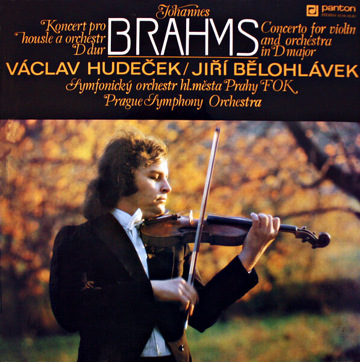
In the late 1980s, Bělohlávek started to work on recording a complete Brahms set. Between 1987 and 1992, he recorded all four symphonies, two serenades, the Academic Festival Overture, the Tragic Overture and Variations on a Theme by Haydn.
In the sound archives of the Czech Philharmonic, Brahms had been connected with the name of Karel Ančerl who had recorded the First and Second Symphonies, The Tragic Overture, The Double Concerto and Piano Concerto No.1 in the 1960p. Coincidentally, both Brahms sets remained unfinished. In Ančerl’s case possibly due to the political situation of the late 1960s, in Bělohlávek’s case probably due to his breakup with the Czech Philharmonic in 1992. After his resignation, he still recorded the two Serenades, but did not get to the Violin Concerto and the Double Concerto.
All of the Brahms recordings were released on LPs and CDs of the Supraphon label and were reissued several times, for example in 2006.
Brahms’ introverted sensitivity is close both to Ančerl and Bělohlávek. Ančerl recorded both symphonies already at a higher age and his artistic maturity had been paid for by his drastic war experience. Bělohlávek approached Brahms as a forty-year-old conducting youth and his interpretation is more youthful in all aspects. There is not so much emotional disappointment and melancholy felt in the slow movements. They both managed to give Brahms the uncompromising precision which Brahms needs…
Refined sound and inner colourfulness without any pomp are Bělohlávek’s domain here. The warm and luscious sound of the string section contributes to this as well as the impressive and at the same time not in the least individualistic entries of the winds (especially woodwind and French horns).
Within the Brahms recording project, Bělohlávek and the Czech Philharmonic recorded also the two famous Brahms’ Piano Concertos performed by Ivan Moravec. Piano Concerto No.2 in B-flat major was recorded in the Dvořák Hall of the Rudolfinum in the autumn of 1988. Piano Concerto No.1 in D minor was recorded a year later, in 1989. Both recordings were released on the Supraphon label in 1991 and were reissued several times.
At the time, one wouldn’t find a better pair of artists to interpret this music here than that of Ivan Moravec and Jiří Bělohlávek. They are both highly educated artists who understand the depth of Brahms’ music fully and think about it thoroughly. Moravec’s technical brilliance is manifested in the minute details of his piano touch. They both have a great sense of creating a compact architecture of the whole and, moreover, they are amazingly precise in details. They are therefore almost ideal performers of Brahms’ music, which is not easily accessible to everyone, and they share a common vision of the music. Besides, they were supported in their endeavour by the beautiful sound and good ensemble of the Czech Philharmonic. (…) Although the recording will soon be twenty years old, it has lost nothing of its value and the timeliness of the artistic opinion.
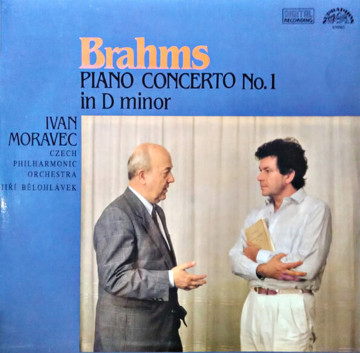
Three recordings of Brahms’ music were released also with the BBC Symphony Orchestra: a live recording of his Symphony No.2 from the Proms in 1999; and the Variations on a Theme by Haydn and the First Piano Concerto together with Cédric Tiberghien which were released in 2007 on the Harmonia Mundi label. Bělohlávek commented this recording in an interview for Klassik.com: „Wir haben sicher verschiedene Herangehensweisen an Brahms Musik. Ich bin stark geprägt von meinen gemeinsamen Brahmsprojekten mit Ivan Moravec, der beide Ausdruckextreme für meinen Geschmack perfekt getroffen hat: die wuchtige Schwere der Struktur und die subtile Gesanglichkeit des langsamen Satzes. Seine durchdachte musikalische Linienführung ist für mich exemplarisch im Brahms-Fach. Dagegen ist Cédric Tiberghiens Brahms eher ein Leichtfüßer, ein schwärmerischer Ansatz à la Chopin, an den ich mich ein wenig gewöhnen musste. Wir haben beide darüber gesprochen und ich habe ihm einige Tipps gegeben. Das Ergebnis ist eine Art Kompromiss, mit dem wir beide gut Leben können.“ [ 9 ]
Translation
“We certainly have different approaches to Brahms’ music. I am strongly influenced by my Brahms projects with Ivan Moravec, who in my view captured both expressive positions perfectly: the massive structural heaviness as well as the subtle songfulness in the slow movement. His well-considered musical lines are exemplary in the Brahms field, in my opinion. In contrast, Cédric Tiberghien’s Brahms is lighter and more enthusiastic in a à la Chopin manner and I had to get used to it a bit. We both talked about it, and I gave him some tips. The result is a kind of compromise that we are both happy with.”
Main sources
- 1.
GRUNDOVÁ, Nora: Vrrrrrmmmm... iHned.cz 2012, 22. 11. Available online
- 2.
GOLDSCHEIDER, Alexander: Jiří Bělohlávek: A Life in Pictures. 2017. Kniha na více než 600 fotografiích a 160 stránkách dokumentuje celoživotní dráhu Jiřího Bělohlávka s použitím tisíců unikátních statistických údajů. Available online
- 3.
BAJER: Jiří Bělohlávek a ČF. Hudební rozhledy 1978, č. 3, s. 120–121.
- 4.
DOBROVSKÁ, Wanda: Hudební rozhledy 1988, č. 12, s. 538.
- 5.
Ps: Johannes Brahms: Recenze gramofonových desek. Koncert pro housle. Hudební rozhledy 1982, č. 5, s. 236.
- 6.
BÁLEK, Jindřich: Johannes Brahms. Harmonie 14, 2006, č. 10, s. 45, 48.
- 7.
VÍTEK, Bohuslav: J. Brahms, Symfonie č. 1–4, Akademická slavnostní předehra, Tragická předehra, Variace na Haydnovo téma – Česká filharmonie, Jiří Bělohlávek (Supraphon Records 1989, 1990, 1991). Hudební rozhledy 1996, č. 4, s. 43.
- 8.
POKORNÝ, Petr: SUPRAPHON SU 3865-2 Johannes Brahms: Klavírní koncerty č. 1 a 2. Ivan Moravec, Česká filharmonie, dirigent Jiří Bělohlávek. Hudební rozhledy 2006, č. 5, s. 64.
- 9.
BAYER, Frank: „Viele grasen nur noch ab“. Jiří Bělohlávek auf der Suche nach musikalischer Wahrhaftigkeit. Klassik.com 2007, 11. Available online
GRUNDOVÁ, Nora: Vrrrrrmmmm... iHned.cz 2012, 22. 11. Available online
GOLDSCHEIDER, Alexander: Jiří Bělohlávek: A Life in Pictures. 2017. Kniha na více než 600 fotografiích a 160 stránkách dokumentuje celoživotní dráhu Jiřího Bělohlávka s použitím tisíců unikátních statistických údajů. Available online
BAJER: Jiří Bělohlávek a ČF. Hudební rozhledy 1978, č. 3, s. 120–121.
DOBROVSKÁ, Wanda: Hudební rozhledy 1988, č. 12, s. 538.
Ps: Johannes Brahms: Recenze gramofonových desek. Koncert pro housle. Hudební rozhledy 1982, č. 5, s. 236.
BÁLEK, Jindřich: Johannes Brahms. Harmonie 14, 2006, č. 10, s. 45, 48.
VÍTEK, Bohuslav: J. Brahms, Symfonie č. 1–4, Akademická slavnostní předehra, Tragická předehra, Variace na Haydnovo téma – Česká filharmonie, Jiří Bělohlávek (Supraphon Records 1989, 1990, 1991). Hudební rozhledy 1996, č. 4, s. 43.
POKORNÝ, Petr: SUPRAPHON SU 3865-2 Johannes Brahms: Klavírní koncerty č. 1 a 2. Ivan Moravec, Česká filharmonie, dirigent Jiří Bělohlávek. Hudební rozhledy 2006, č. 5, s. 64.
BAYER, Frank: „Viele grasen nur noch ab“. Jiří Bělohlávek auf der Suche nach musikalischer Wahrhaftigkeit. Klassik.com 2007, 11. Available online
